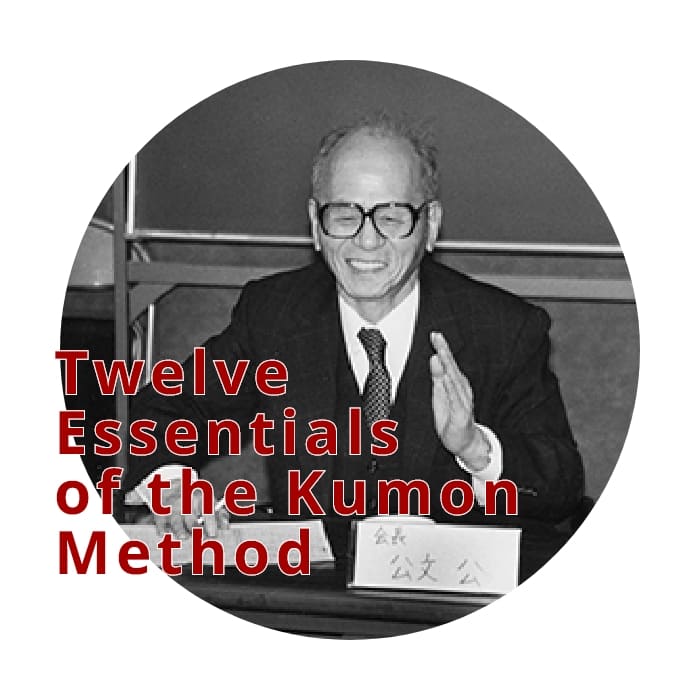Part 4 Home-Based Education

Children go to school and study every day. Home-based education is most effective when children study what they haven't covered thoroughly enough at school, and in a different way to the way they study at school. In the home, having children do the same things that they have done at school using the same study method results in a lot of wasted time and effort. It also leads to children losing their motivation to learn. In the home we should do things differently to the way they are done in school by letting each child learn in a way that is suited to his or her personality and ability while prioritizing specific study goals.
Toru Kumon
Children grow up surrounded by three educational environments—first there is the home, then school, and
finally the local community. We believe that a healthy educational environment is formed when these three
environments function effectively in harmony. Those who believe that education is something that should be
left entirely to the schools are fundamentally mistaken. Indeed that very misunderstanding is one of the
factors that leads to the turmoil in schools today.
The Kumon Method is not a replacement for schooling. On the contrary, our method of learning was conceived
from the point of view of how best to educate school children in the home. For this reason the Kumon
Method avoids study at home of the same things that children study at school. We do not try to cover all
of the subjects that children study at school, focusing instead on the development of the skills of
reading, writing and calculation, which form the foundation for all learning.
Children differ greatly in terms of the time and effort required to master these basic skills of reading,
writing and calculation. Without ensuring that each individual has sufficient practice for his or her
personal needs, we cannot guarantee the development of sufficient skills in these areas. From this point
of view, it is unreasonable to expect that all students will gain the same level of mastery when studying
in the conventional class format.
Parents who are concerned about their child's future will understandably want their child to gain academic
ability that will ensure peace of mind in the long term, as opposed to focusing on the curriculum for
their child's current school grade. For that reason, one of the goals of the Kumon Method is to equip
children with the ability to do high school level worksheets so that they will not encounter difficulties
when they go on to secondary level education.
We believe it is important to make a clear distinction between what can be done in schools and what can be
done in the home. In school, children learn how to study well while interacting with their peers as part
of a group. At home, it is possible to provide children with education that enables them to learn
according to their own individual needs. This is what we need to concentrate on in the home. By doing this
the effects of both systems will work in synergy to create a better overall educational environment for
our children.
